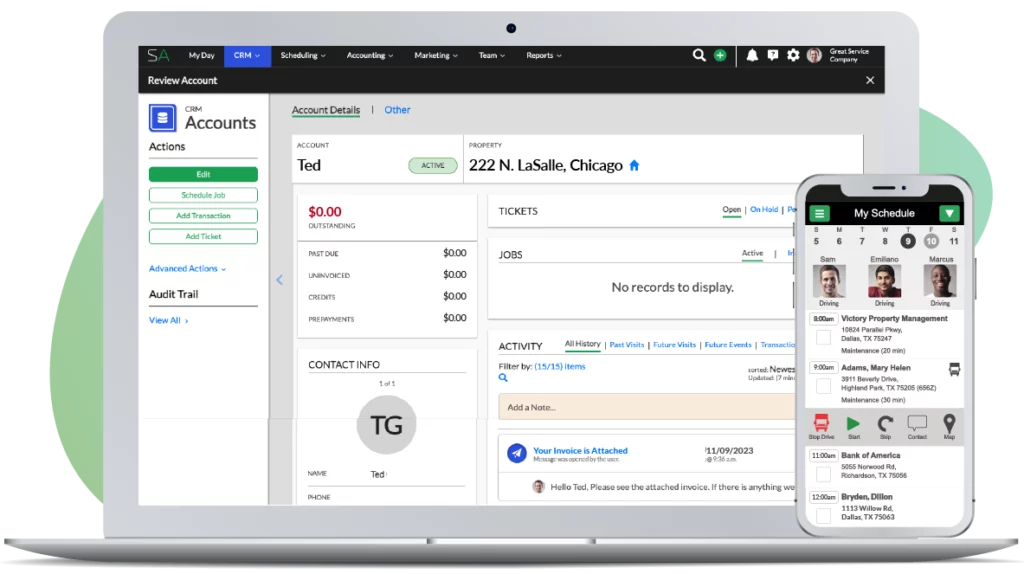Jonathan and Ryan explain why the use of metrics to increase sales is key to your business success.
Jonathan: Hey Ryan. In this last video, we were just talking about metrics. You guys are a big operation. You make a lot of profit. You do very well. We were talking about metrics, and we were talking about creating actionable steps for your sales team to go out there and generate a lot of revenue. I feel like maybe we were talking at too high of a level, so can you boil that back down for us? To start, what the heck is a metric?
Ryan: Right. This is one of the challenges, even when you’re starting a new territory or you’re starting a new area, or in our case, when our new franchises are starting. One of the things that’s a big challenge is understanding what the expectation is. A metric for us is just a measure that you can use to generate data so you know what to do.
Jonathan: Okay, so this metric would be so the leadership of the company can measure the salesperson or whomever. And, then I’m going to also guess that it’s also so the salesperson can measure himself?
Ryan: Yes.
Jonathan: Okay.
Ryan: Even in a smaller organization, where it may be just 1 or 2 guys, what is that guy doing to measure himself against his competition, or to make sure he’s continuing to grow? Luckily, in the green industry, and especially in lawn care and landscaping, there’s a lot of this data already out there. What is the average sale? How many yards do you need to cut in a week to make a profit? This data is already out there. Tree and shrub care, in our case, we have to provide all that information to our franchise owners as they’re getting started, so they know what their expectations are 6, 8, 12 months down the road.
Jonathan: You’re teaching the franchise owner, here are the core metrics that you need to be looking at.
Ryan: Yes.
Jonathan: Then you’re telling them how to track the data. For example, I’m brand new in business. I don’t know anything. You tell me I should be looking at these, I’ll make up, 10 metrics. These are the 10 metrics that are the gauges, like a speedometer in your car, that will tell you if you’re running the company correctly, if you’re moving in the direction you want to move. As that person, I now have heard these 10 metrics hypothetically. How do I take it to the next step and actually track that data? Actually, let’s make this a little more real. What’s 1 metric?
Ryan: The first metric is your leads. So, you need to know where your leads are coming from and how many are being produced, which will help you to understand your cost per lead.
Jonathan: Okay.
Ryan: Right. For a new company, you need to know that you want a low cost per lead that’s going to generate income.
Jonathan: Okay.
Ryan: That’s the first metric.
Jonathan: I’m a franchisee. I now have bought into the idea that I really need to be paying attention to leads.
Ryan: Yes.
Jonathan: Am I looking at them on an annual basis? Am I looking at them by month, by week, account?
Ryan: Yeah. Starting out as a new company, you’re going to look at them every week, because you’re so intense and you already know what’s happening. You want to review that on a weekly basis. As you continue to grow through that first quarter, maybe back that out to the month and then to the quarter. As you continue to grow, I would at least every quarter be measuring and looking at what’s going on from the sales standpoint.
Jonathan: Okay, so I believe that I need to watch leads. I now have an idea of how frequently I need to watch them, but how do I actually capture my leads? That’s the next challenge. And my belief is most people are not tracking this data. How do I track the data? Where do I get the data from?
Ryan: From your clients. Every time you go out to meet with somebody, you ask them. How did you hear about us?
Jonathan: Okay, so that’s tracking a lead source.
Ryan: That’s tracking a lead source. You’re going to put that into Service Autopilot and make sure that you are tracking that lead source. You have to be diligent. It takes forethought. It takes effort. Without taking that effort, you’re not going to know what marketing is doing what and where you need to focus your efforts.
Jonathan: Okay, so staying with this 1 metric just so we can illustrate the point, because you guys have been so successful with this. I’m tracking leads. With the lead count, what decisions downstream will I be able to make with it? If I know leads, what does that actually even affect in my business where I can justify the effort to track it?
Ryan: I’ll tell you one of the things that we’ve done, and it’s saved us a ton of money in our marketing efforts, is to be able to cut out print marketing almost completely because we were able to track those leads and find that it really produced nothing for us long-term. That’s 1 thing in our company that we’ve been able to reduce a huge expense from, and then shift the marketing dollars over to things that do work.
Jonathan: You’re saying that what you’ve found is, if the lead came through print, they were not converting into a sale, to a client.
Ryan: That’s correct.
Jonathan: Okay, so you found that it was better to focus on the online marketing activities.
Ryan: Right.
Jonathan: Or not just online, but other activities.
Ryan: Other activities, right. We could also see how many leads we were getting by the month based on the source.
Jonathan: Are you looking at leads by ZIP code or carrier route or any other? Are you breaking it down any further, or have you found that just literally looking at the number of leads is enough?
Ryan: I think in our particular case, just looking at the leads on a regular basis, monthly is when we typically look at them to see what marketing pieces are doing what. But yeah, just by the source right now. We haven’t broken them all the way down to particular areas.
Jonathan: Okay. All right. What’s another metric that we’d be focusing on, just to further illustrate the point here?
Ryan: In order to build a sales plan, you have to know what your average sale is.
Jonathan: Okay, dollar value.
Ryan: Dollar value.
Jonathan: Okay.
Ryan: If it’s some people, it may be $100. Some people, it may be $1,000. Without knowing that, you don’t know how many leads you need to generate to figure out how to get to the end of your sales goal. Also, it can help you by knowing your dollar value per sale. It could help you figure out where you want to focus your efforts. You can increase your sales by simply increasing your dollar value per sale on those services that provide higher value.
Jonathan: Right. Going back to our other video then, I’m going to extrapolate that. You were talking about how we’re going to set a goal of, we need to do this many estimates, we need to make this many sales calls. Also, knowing this data, the dollar value of the lead by source, knowing the number of leads, I assume then that also identifies for your team how much marketing you need to do. Whatever type of marketing that is, you need to put out this volume of marketing, because it’ll generate this volume of leads that will turn into this number of calls, this number of estimates. Are we thinking about that correctly?
Ryan: Yes.
Jonathan: Okay. Is there anything else that we should mention that would just help clarify understanding your metrics or creating metrics or tracking this data for the very first time? Imagine it from the viewpoint of I’m a little bitty company just getting started. This is all foreign to me. Are there any other points that you’d want to mention that would help them?
Ryan: Again, it takes diligence. It takes time. In the beginning, it can be frustrating, because you have so many hats to wear. It’s worth the time and effort that it takes.
Jonathan: Even if I’m doing 100 grand or less, should I do it, or is that only for big companies?
Ryan: No, absolutely do it. If I was doing 50,000, I would want to do it, because I want to know where that money is coming from.
Jonathan: Yeah, I have to agree, because I feel like the little guys that get big are the little guys that did the same stuff the big guys were doing. The big guys weren’t doing all the same things as all the little guys, and magically got big. You got to think like the big company.
Ryan: That’s right.
Jonathan: I appreciate it.
Ryan: No problem.
Jonathan: That’s great information. Thank you.
Ryan: Thank you.



